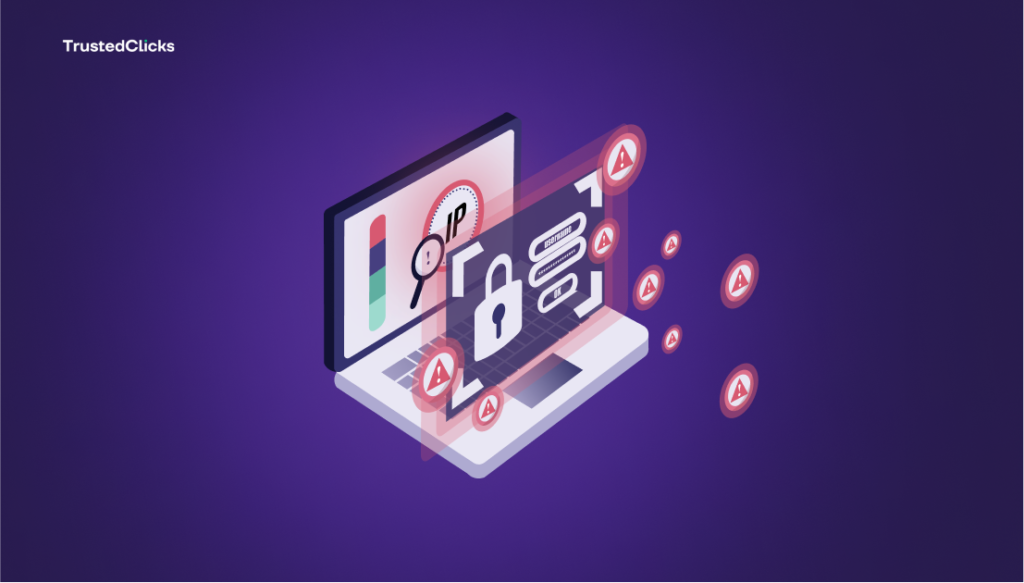- E-Commerce Security, Affiliate marketing
Maximizing IP Risk Scoring to Enhance Your Ad Campaigns and Boost ROI


In the competitive world of digital advertising, businesses constantly seek innovative ways to optimize campaigns, target the right audience, and maximize return on investment (ROI). One such emerging strategy is leveraging IP risk scoring. By understanding and utilizing this data-driven approach, advertisers can significantly enhance their ad campaigns while mitigating risks.
In this comprehensive guide, we delve into what IP risk scoring is, how it works, and how it can be utilized to enhance your ad campaigns and boost ROI.
What Is IP Risk Scoring?
IP risk scoring involves evaluating the likelihood that an IP address is associated with fraudulent or malicious activity. It assigns a risk score to each IP address based on various factors, such as:
Historical behavior: Has the IP address been associated with spam, bot activity, or cyberattacks?
Geolocation: Does the location of the IP address match the expected behavior of the user?
Proxy or VPN usage: Is the IP address associated with anonymity tools that could mask fraudulent behavior?
Frequency of activity: Are there unusually high levels of activity coming from the IP?
By analyzing these and other parameters, advertisers can determine whether to trust interactions from a specific IP address. This is crucial in combating click fraud, ensuring ad spend is directed toward genuine users.
Why Is IP Risk Scoring Important for Ad Campaigns?
IP risk scoring typically involves integrating a specialized solution into your advertising or analytics platform. These solutions analyze IP addresses in real time, assigning a score that indicates the risk level. Here’s how it works:
Data Collection: IP addresses interacting with your campaigns are logged along with contextual data like geolocation, device type, and activity patterns.
Risk Analysis: Each IP is evaluated against a database of known malicious IPs and analyzed for anomalies, such as mismatched geolocation or suspicious activity levels.
Scoring: A numerical score is generated, often on a scale of 0 to 100, with higher scores indicating greater risk.
Action: Based on predefined thresholds, high-risk IPs can be flagged, blocked, or subjected to further verification before interacting with your campaigns.
Strategies to Leverage IP Risk Scoring in Your Ad Campaigns
To maximize the benefits of IP risk scoring, consider implementing the following strategies:
Integrate with Ad Platforms: Many IP risk scoring tools can integrate directly with popular advertising platforms like Google Ads or Facebook Ads. This enables real-time monitoring and action.
Set Risk Thresholds: Define acceptable risk levels based on your campaign goals. For example, a high-risk threshold might be suitable for awareness campaigns, while a lower threshold may be better for conversion-focused campaigns.
Focus on High-Value Campaigns: Apply IP risk scoring to campaigns with higher stakes, such as those targeting premium customers or promoting expensive products.
Monitor and Adjust: Regularly review IP risk reports to refine your targeting and exclusions. This ensures your campaigns remain optimized as conditions evolve.
Combine with Other Fraud Prevention Tools: Use IP risk scoring in conjunction with other fraud detection measures, such as device fingerprinting and behavioral analysis, for a comprehensive approach.
Case Studies: Real-World Applications of IP Risk Scoring
Case Study 1: E-commerce Platform
An e-commerce company running pay-per-click (PPC) campaigns noticed a high volume of clicks with low conversions. By implementing IP risk scoring, they identified several high-risk IPs associated with bot traffic. After blocking these IPs, their campaign performance improved significantly, with a 25% increase in conversion rates and a 15% reduction in ad spend wastage.
Case Study 2: SaaS Provider
A SaaS company offering a free trial detected a surge in fraudulent sign-ups. By analyzing IP risk scores, they found that many sign-ups originated from proxy servers. After implementing stricter IP filtering, they saw a 30% improvement in lead quality and a corresponding boost in paid subscriptions.
Measuring the Impact of IP Risk Scoring on ROI
To assess the effectiveness of IP risk scoring, track the following metrics:
Click-Through Rate (CTR): Monitor whether excluding high-risk IPs leads to an increase in CTR, indicating better audience targeting.
Conversion Rate: A higher conversion rate post-implementation suggests that your ads are reaching genuine users.
Cost Per Acquisition (CPA): Reduced CPA indicates that your campaigns are achieving better efficiency.
Fraudulent Activity Reduction: Measure the decline in suspicious activity, such as bot clicks or fake sign-ups.
Overall ROI: Compare the ROI of campaigns before and after implementing IP risk scoring to quantify the impact.
Challenges and Best Practices
While IP risk scoring offers numerous benefits, it’s not without challenges. Here’s how to address them:
False Positives: Overly aggressive filtering might exclude legitimate users. Regularly review flagged IPs to ensure accuracy.
Integration Complexity: Seamlessly integrating IP risk scoring with your ad platforms can be technically demanding. Work with experienced providers to streamline the process.
Evolving Threats: Fraudulent actors continuously adapt. Choose a solution that updates its threat database in real time.
Best Practices
Conduct periodic audits of your risk scoring system.
Use machine learning models to refine scoring accuracy over time.
Combine IP risk scoring with user education campaigns to foster trust.
Frequently Asked Questions
What industries benefit most from IP risk scoring?
IP risk scoring is particularly beneficial for industries like e-commerce, SaaS, online advertising, and finance, where fraud prevention and accurate targeting are critical.
How do I choose the right IP risk scoring provider?
Look for a provider with a robust and frequently updated threat database, seamless integration options, and excellent customer support.
Can IP risk scoring help with compliance?
Yes, by filtering out fraudulent or malicious activity, IP risk scoring can assist in maintaining compliance with regulations like GDPR or CCPA.
Is IP risk scoring effective against all types of fraud?
While it is highly effective against IP-based fraud, combining it with other tools like device fingerprinting and behavioral analysis provides a more comprehensive defense.
Conclusion
IP risk scoring is a powerful tool that can revolutionize the way businesses approach digital advertising. By identifying and mitigating risks associated with fraudulent IPs, companies can enhance their ad campaigns, improve audience targeting, and achieve significant cost savings. When implemented strategically, this approach not only boosts ROI but also ensures a more secure and efficient advertising ecosystem.
As the digital advertising landscape evolves, leveraging technologies like IP risk scoring will become increasingly essential. By staying ahead of the curve, your business can maximize its competitive edge and deliver greater value to its audience.
Table of Contents
Join our community!
Subscribe to our newsletter for the latest updates, exclusive content, and more. Don’t miss out—sign up today!
Recent Posts

The Role of IP Addresses in Fraud Detection
- 2 mins read

4 Effective Ways to Combat Click Fraud in Your Ad Campaigns
- 3 mins read

How to Build an Affective IP Fraud Prevention Strategy: A Step-By-Step Guide
- 6 mins read



